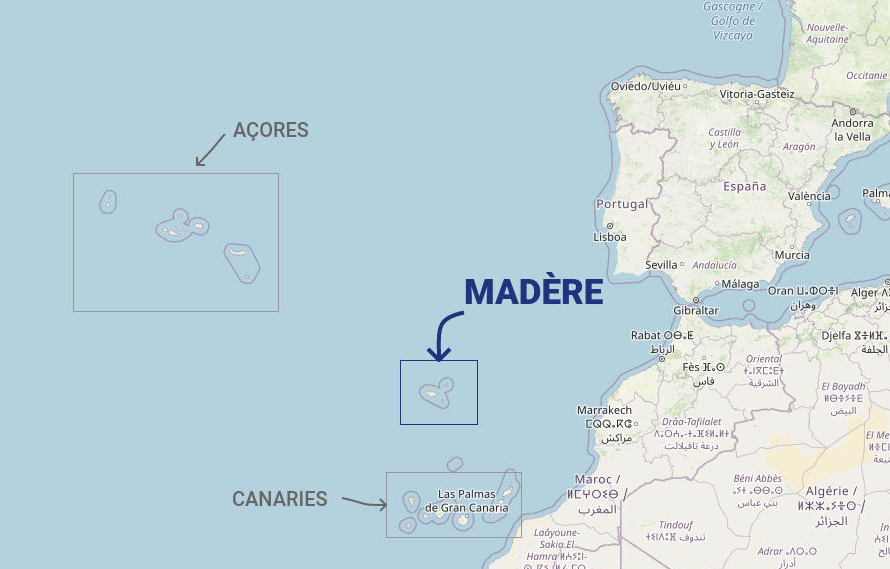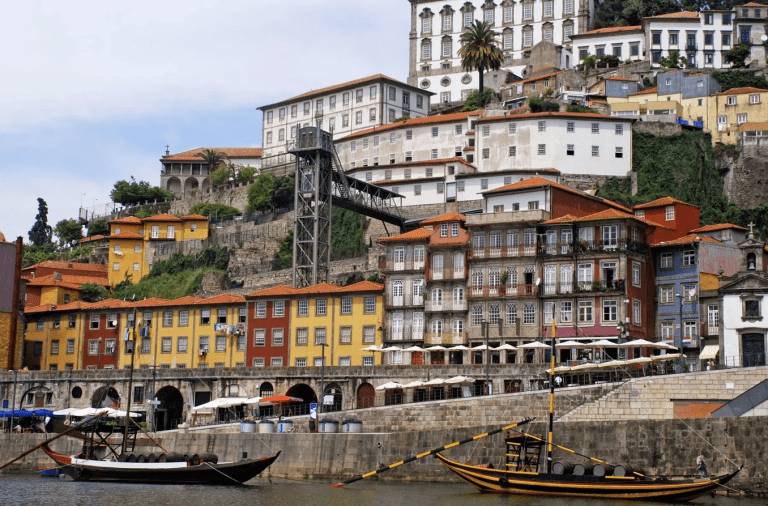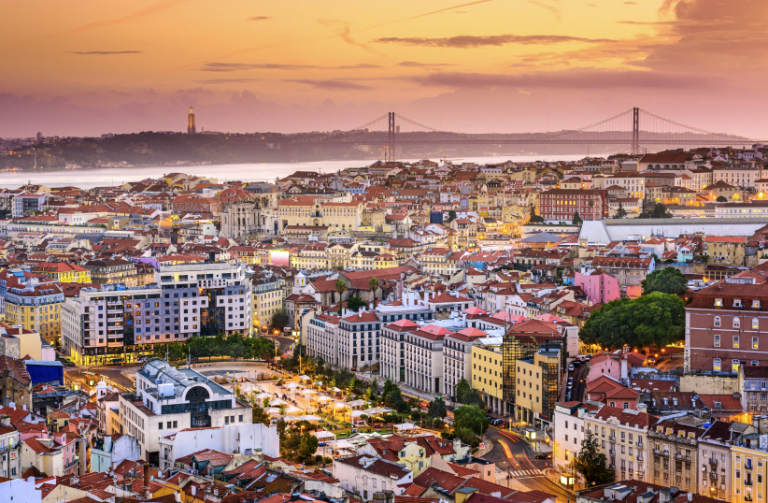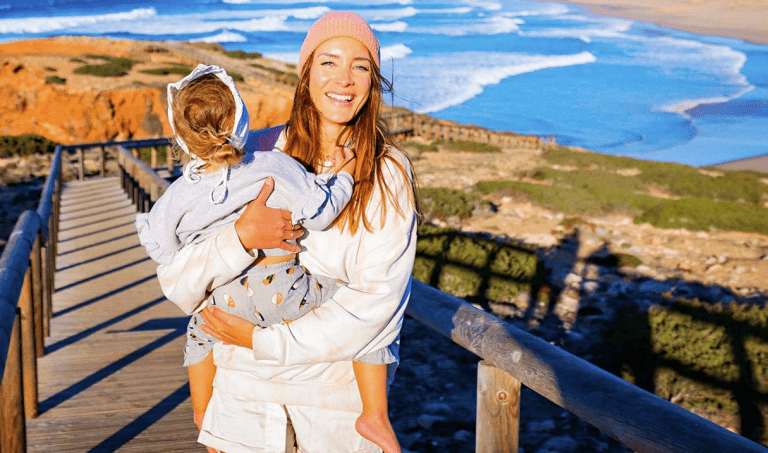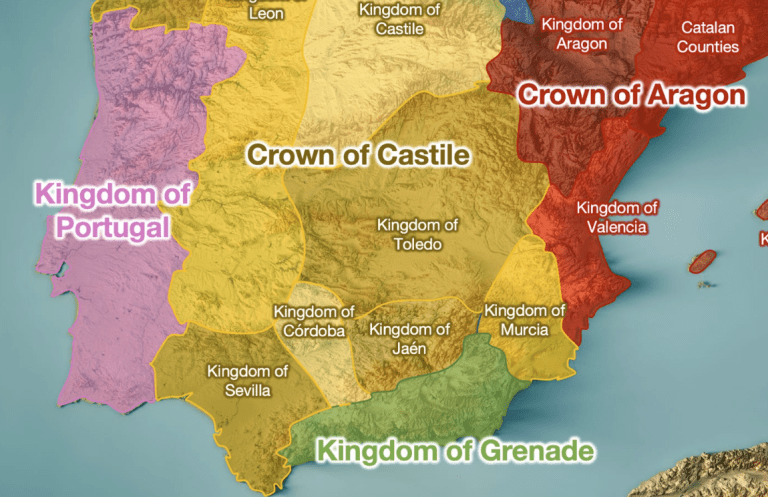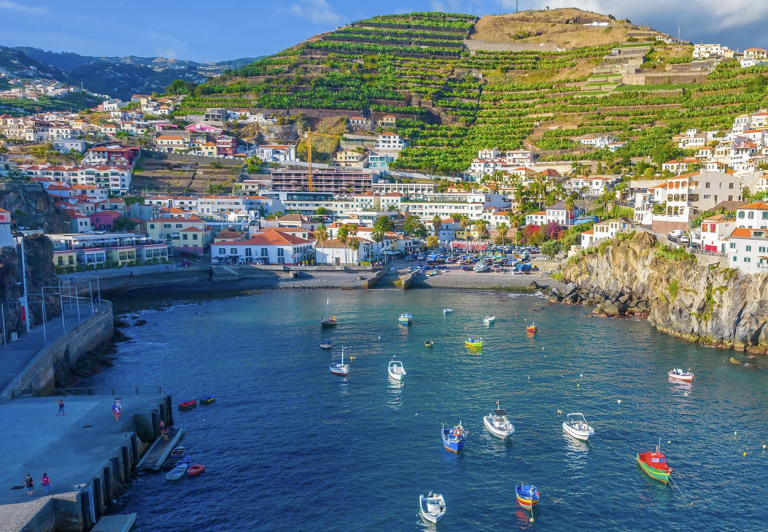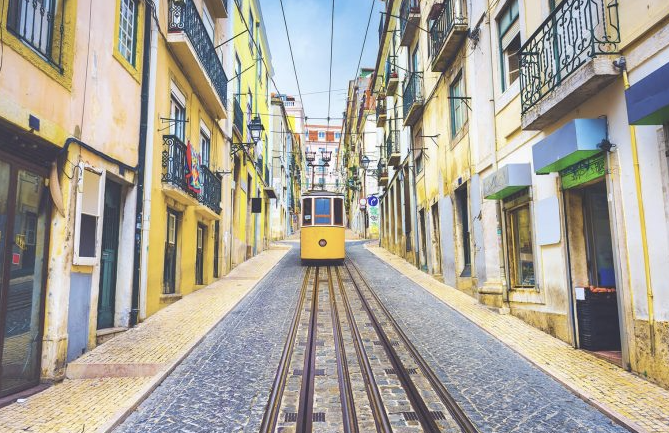Have you ever wondered, “where is Madeira Portugal?” Located in the North Atlantic Ocean, southwest of mainland Portugal, Madeira Island forms part of an archipelago that shares its name. This island paradise has a rich history dating back to when Portuguese explorers first realized its potential.
In this blog post, we will delve into the unique landscape features shaped by volcanic origins and how they can be explored through cable car rides or visits to black lava bathing pools at Porto Moniz. We’ll also discuss cultural festivities such as the Festival of Flowers event and local cuisine heavily influenced by fresh produce from the sea and land.
The wine culture on Madeira Island plays a significant role in shaping its identity – fortified Madeiran wine is known worldwide for its distinctive taste impacted by the Atlantic Ocean’s winemaking process. You’ll also learn about architectural developments like vineyard villa projects and botanical wonders such as Monte Palace transformation into beautiful gardens.
We won’t forget about neighboring Porto Santo with its stunning beaches contrasting against the lack of beaches on Maderia Island itself. Lastly, if you’re wondering where Cristiano Ronaldo was born or what makes Poncha drink culturally important – we’ve got it covered too!
Discovering Madeira, Portugal
Located in the North Atlantic Ocean, Madeira is a picturesque island that Portuguese seafarers stumbled upon in 1419. It’s three times the size of Nantucket and has roads as impressive as Switzerland’s. Get ready to explore this intriguing destination.
The history of Madeira’s discovery
In the 15th century, Portuguese explorers led by Henry the Navigator found an untouched paradise – Madeira. The name ‘Madeira’ means ‘wood’ in Portuguese, perfectly describing the island’s dense forests.
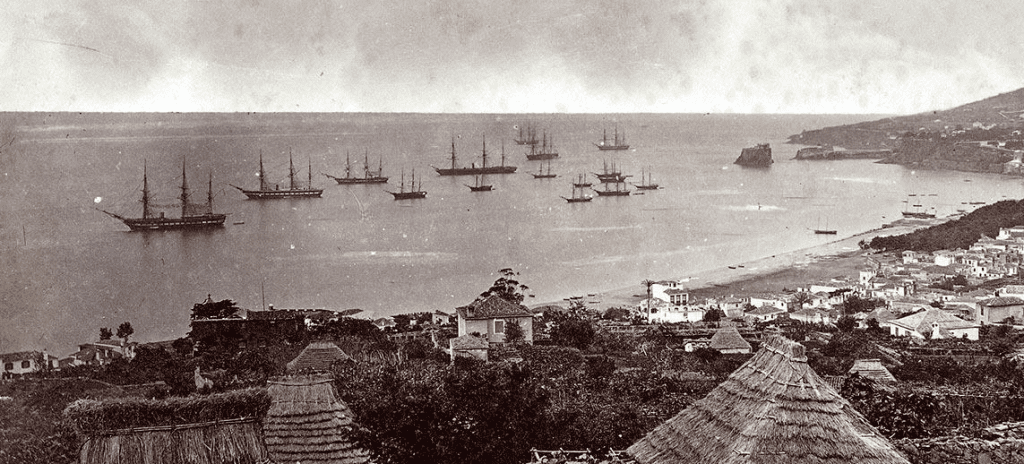
Geographical features and accessibility
Madeira is roughly three times the size of Nantucket and can be easily reached by air or sea from mainland Europe. Its extensive road network allows you to explore every corner of this fascinating place. Despite its small size, you’ll find diverse landscapes, from lush green mountains to rugged cliffs with crystal clear waters below. For adventure seekers, there are numerous trails winding through Levadas (irrigation channels), offering breathtaking views at every turn.
Remember, some roads in Madeira can be narrow and steep, so drive carefully, especially in wet weather conditions. If you prefer public transportation, efficient bus services operate across major towns, and taxis provide convenient travel within city limits. You can also hop on an inter-island ferry from Funchal (the capital city) to Porto Santo Island for another exciting island adventure.
Unique Landscape Features of Madeira
Madeira, a nature lover’s paradise, was created by volcanic explosions five million years ago. The result? Lush forests and few sandy beaches. Get ready for unforgettable adventures.
Volcanic Origins and Their Impact on Landscape
The volcanic origins of Madeira shaped its unique topography. The eruptions created fertile soil, giving rise to dense Laurisilva Forests – a UNESCO World Heritage Site. But forget about typical beach views; here, you’ll find dramatic coastlines with cliffs plunging into the Atlantic Ocean.
Exploring Through Cable Car Rides
To truly appreciate Madeira’s diverse terrain, take one of the seven scenic cable car rides on the island. These rides offer bird’s-eye views of terraced vineyards, lush valleys, and charming villages. Don’t miss the Funchal-Monte Teleferico ride, which takes you up to Monte Palace Tropical Garden.
Black Lava Bathing Pools at Porto Moniz
Porto Moniz is home to another fascinating feature: black lava bathing pools filled with crystal-clear seawater during high tide. It’s like a natural spa experience. These pools are remnants of past volcanic activity and provide a safe area for swimming, shielded from the ocean waves.
So, get ready to be enchanted by Madeira’s unique landscapes – every corner holds a new discovery.
Cultural Festivities and Local Produce
Tourism plays a significant role on this island, with annual events such as the Festival of Flowers showcasing ancient and classical cars along with local produce like poncha liquor made from reeds and fresh flowers native to the area. Seafood here is plentiful; parrot fish or lapas are a must-try, and don’t forget to indulge in bolo de caco – a staple flatbread enjoyed by locals.
The significance of tourism in Madeira
Madeira’s economy thrives largely due to its booming tourism industry. Visitors come to Madeira for its culture, festivals, landscapes and cuisine. The island offers an array of activities for tourists ranging from hiking through lush forests to sampling locally brewed Poncha.
Highlights from the Festival of Flowers event
Held annually during springtime when flowers bloom across Madeira’s landscape, the Festival of Flowers is one spectacle not to be missed. It features beautiful floral carpets lining the streets while traditional folklore groups perform lively dances amidst colorful floats adorned with myriad blooms. This festival also showcases classic cars that add a touch of nostalgia to this vibrant celebration.
An overview of local cuisine
- Poncha: A potent alcoholic beverage traditionally made using distilled sugar cane juice mixed with honey, lemon juice, and orange peel. Learn more about Poncha here.
- Lapas: These delicious shellfish delicacies are typically grilled over a charcoal fire and served sizzling hot, accompanied by garlic butter sauce. Discover the taste of Lapas here.
- Bolo de Caco: A popular bread made with molasses, giving it a distinctive sweet flavor. It is usually eaten slathered in garlic butter, making it an irresistible treat any time of the day. Find out more about Bolo de Caco here.
Whether you’re a foodie seeking to explore new flavors or a history buff eager to delve into rich cultural heritage, Madeira, Portugal has something to offer everyone. So why wait? Start planning your trip today.
Madeira, Portugal is a popular tourist destination known for its vibrant festivals and delicious local cuisine. The Festival of Flowers showcases stunning floral displays, traditional dances, and classic cars, while the island’s food scene offers must-try dishes like poncha liquor and lapas shellfish.
Architectural Developments & Botanical Wonders
Madeira isn’t just a pretty face; it’s a place where cool buildings and awesome plants hang out together. The island has been getting a makeover that’s all about adding charm without losing its unique vibe.
Vineyard Villa Project Insights
Check out the latest project: four villas smack in the middle of vineyards. It’s like living amidst the wild, yet still with internet access. These villas are designed to blend in with Madeira’s traditional architecture, so they won’t stick out like a sore thumb. Get the scoop on this exciting development from this article on Madeira Island News.
Monte Palace Transformation into Botanical Gardens
They’re turning Monte Palace into a massive garden. Once a collection of luxurious residences, the Monte Palace has been transformed into an expansive botanical garden spanning 750,000 square feet and featuring flora from every corner of the globe – all with stunning views of Funchal Bay. And the view of Funchal Bay? Mind-blowing. They took their time with this transformation, making sure it didn’t ruin the original beauty. Now you can wander through lush paths and chill by peaceful ponds. It’s like a dream, man.
For insider tips on exploring these stunning gardens, check out Madeira No Words Needed guide. They know what’s up.
But wait, there’s more. These projects aren’t just about looking pretty. They’re all about sustainable tourism, respecting the local culture and environment. So next time you’re sipping poncha under the warm sun, remember: you’re part of something bigger than just a vacation.
Learning Resources & Celebrations
In the era of global health crises, it’s important to be well-informed and prepared. Madeira offers its visitors access to resources like the COVID-19 Portal, which provides insights about past pandemics. Get ready to learn from history and be a responsible traveler.
Madeira knows how to celebrate in style. Check out the “100 Women” platform, marking the centennial celebrations of the Nineteenth Amendment. Let’s not forget about the world-wide mission to promote gender parity.
Let’s not forget about the “Saving Earth” initiative. It’s all about preserving Mother Nature for future generations. Reduce your carbon footprint and embrace sustainable living.
COVID-19 portal details
- CDC guidelines on COVID-19 safety measures
- NHS advice on managing symptoms at home
- UNICEF’s guide on hand hygiene during pandemic times
“100 women” platform celebration highlights
- Alice Paul: The woman behind the Nineteenth Amendment.
- Rosa Parks: The first lady of civil rights.
- Margaret Sanger: The pioneer of family planning services.
“Saving Earth” initiative highlights
The Saving Earth Initiative educates about climate change effects and promotes eco-friendly lifestyle choices. Join campaigns like plastic-free July and zero waste week to make a positive impact.
Wine Culture in Madeira
If you’re a fan of vino, add Madeira to your must-visit list. The history of Madeiran wine is as rich as the wines themselves. This island’s destiny was shaped by its famous wine, produced here for centuries.
The History Behind Madeiran Wine
Madeira’s winemaking journey began in the 15th century when Prince Henry the Navigator brought grapevines from Crete. These vines thrived in Madeira’s volcanic soil, creating a unique flavor profile.
By the 18th century, Madeiran wines were exported globally, with fans like Thomas Jefferson and Winston Churchill. Today, vineyards still use traditional methods like treading grapes by foot and aging wines using the ‘estufagem’ process, giving them their caramelized taste.
The Impact of the Atlantic Ocean
The Atlantic Ocean plays a crucial role in Madeira’s winemaking. Its influence can be seen in climatic factors and trade routes, enabling early exports of this delicious beverage.
The cool ocean breezes regulate temperatures, preventing overripening. High humidity levels ensure grapes don’t dry out too quickly after harvest, resulting in intense flavors. Salty sea air adds subtle briny notes, enhancing the overall tasting experience.
Exploring Madeira’s wine culture offers fascinating insights into past traditions merged with modern techniques, producing some of the most intriguing bottles on the market today. Think about taking a trip to one of the numerous vineyards in Madeira and savoring its unique flavor.
Quinta da Casa Branca Experience
If you’re a foodie who loves local cuisine and history, don’t miss the Quinta da Casa Branca dining experience. This boutique hotel serves up traditional Madeiran dishes in an elegant setting.
Dining Delight
Indulge in their signature dish, herb-crusted lamb with locally sourced couscous. A delectable treat that pays tribute to the area’s traditional cuisine. The succulent lamb melts in your mouth, while the fluffy couscous adds a delightful texture contrast. For more info or reservations, visit their official website.
Winston Churchill’s Funchal Connection
Funchal city holds historical significance as a former destination of Winston Churchill himself. During his stay, he resided at Reid’s Palace Hotel, an iconic landmark that still stands today. This grandiose establishment has hosted many famous personalities, but none as influential as Mr. Churchill. He spent hours painting beautiful landscapes from the garden terrace, overlooking the Atlantic Ocean.
Follow in his footsteps by taking leisurely strolls around Funchal city after dinner, soaking up its charm and beauty. Marvel at architectural wonders like the 15th-century Se Cathedral. To learn more about Winston Churchill’s connection to Madeira, check out this informative article. So why wait? Start planning your trip now.
Engenhos do Norte Rum Making Process
If you’re a fan of rum, Madeira offers an unforgettable experience at Engenhos do Norte. This distillery has been making rum for centuries. Witness sugar cane turning into potent spirits using ancient methods.
Rum making at Engenhos do Norte
The process starts with harvesting sugar cane from across the island. It’s then crushed, juiced, fermented, and distilled in copper stills over wood fires – giving Madeiran rum its smoky flavor.
A tour of this facility shows workers tending to fires and monitoring fermentation tanks. And of course, you’ll get to taste some freshly made rum.
Faj dos Padres experiences
After exploring Engenhos do Norte, spend an afternoon at Faja dos Padres, a unique location accessible only by cable car or boat. Nestled between cliffs and ocean waters, Faja dos Padres has year-round spring-like weather perfect for relaxing.
This spot is known for its exceptional produce thanks to fertile volcanic soil – think exotic fruits growing beside vineyards. And there are seafood restaurants serving up fresh catches paired perfectly with local wines or perhaps some Engenho’s rum.
All these elements make Faja dos Padres an ideal place to soak up serene surroundings, breathtaking views, and savor superlative cuisine reflecting the true essence of Madeiran life. So why wait? Start planning your trip today.
Neighboring Porto Santo Beaches
While Madeira’s charm lies in its lush landscapes and rich cultural heritage, it’s a bit lacking in the beach department. But fear not, because just a hop, skip, and a ferry ride away is the neighboring island of Porto Santo.
The lack of beaches on Madeira Island
Madeira’s volcanic origins have left it with more mountains and forests than sandy shores. The few beaches that do exist are mostly pebbles or black lava rock – unique, but not exactly your typical beach experience.
The beautiful beaches of neighboring Porto Santo
Let’s discuss the amazingness of Porto Santo. Picture this: a six-mile stretch of pure golden sand, crystal-clear water, and a bay that’s basically a slice of paradise. It’s the perfect spot for sun seekers looking to soak up some Mediterranean rays.
But wait, there’s more. Porto Santo’s beach is not just a pretty face. It also has historical significance. This is where Christopher Columbus lived after marrying Filipa Moniz Perestrelo, a member of Portugal’s noble families. You can even visit the Christopher Columbus House Museum to learn more about his time on Porto Santo.
And if lounging on the beach isn’t your thing, fear not. Porto Santo offers plenty of other activities to keep you entertained. How about a round of golf at the 27-hole course designed by champion golfer Severiano Ballesteros? Or maybe indulge in some thalassotherapy treatments using mineral-rich sea mud and seawater known for their therapeutic properties.
Getting to Porto Santo is a breeze, with regular ferry services operating between Funchal (Madeira) and Vila Baleira (Porto Santo). So don’t miss out on this little slice of heaven – whether you’re a sun worshipper or just looking to add some beachy vibes to your Portuguese adventure.
Madeira Island in Portugal lacks beaches due to its volcanic origins, but nearby Porto Santo offers a six-mile stretch of golden sand and crystal-clear water. The beach is not only beautiful but also has historical significance as the place where Christopher Columbus lived after marrying into Portugal’s noble families.
Village Curral das Freiras: Birthplace of Cristiano Ronaldo and Home of Poncha
Curral das Freiras, a charming village nestled among rugged mountain peaks in Madeira, Portugal, holds special significance. Curral das Freiras is the birthplace of Cristiano Ronaldo, a global football icon who was born there in 1985.
The Journey of Cristiano Ronaldo
The biography of Cristiano Ronaldo, one of the world’s most celebrated footballers, begins right here. From this humble village, he rose to become an international sports icon, inspiring countless aspiring athletes worldwide with his unwavering dedication and hard work.
But that’s not all Curral das Freiras is famous for. The region is also renowned for its abundant chestnut harvests, which are used in various local delicacies that tourists absolutely adore.
Poncha: Madeira’s Liquid Tradition
However, what truly defines life in Madeira is Poncha – a potent brew crafted using traditional methods passed down through generations. This invigorating cocktail, made by mixing sugar cane spirit with honey and lemon juice, is a beloved part of local culture and a testament to the island’s vibrant spirit.
Madeiran traditions like Poncha making continue to thrive today, shaping the islanders’ way of life and embodying the essence of living ‘the Madeiran way’.
FAQs in Relation to Where is Madeira Portugal
Is Madeira closer to Africa or Europe?
Madeira is geographically closer to Africa, approximately 360 miles from the coast of Morocco. However, it’s politically part of Portugal in Europe. Learn more.
What is Madeira Portugal known for?
Madeira is renowned for its stunning landscapes, fortified wine production, and as the birthplace of footballer Cristiano Ronaldo. Visit our Madeiran culture page for details.
Where is Madeira to Portugal?
Madeira archipelago lies southwest of mainland Portugal in the Atlantic Ocean. For a visual representation, check this Google Map link.
Why is Madeira so special?
The unique combination of subtropical climate, dramatic volcanic landscapes, and rich cultural heritage makes Madeira special. Explore more on our Madeiran exploration page.
Conclusion
A captivating destination with volcanic origins, breathtaking landscapes, vibrant festivals, and delicious local cuisine. Explore the botanical gardens at Monte Palace or indulge in the rich flavors of Madeiran wine, and immerse yourself in the rich history and charm of this hidden gem. Wondering “where is Madeira Portugal?” Now you know, it’s a place waiting to be discovered and cherished.

